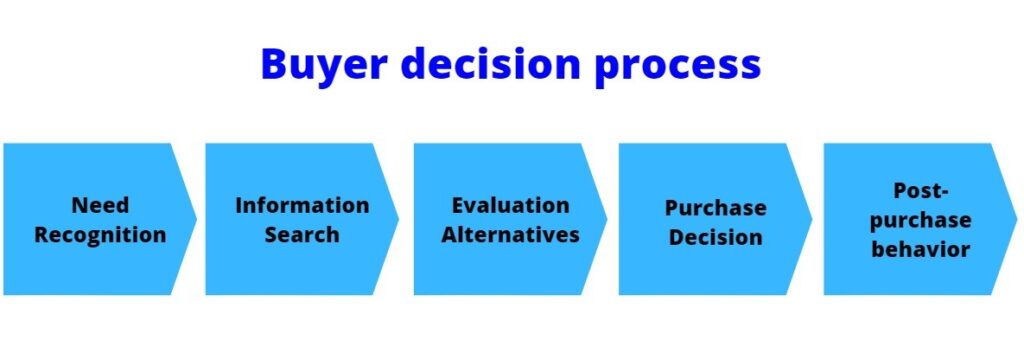The buyers are the most important segment of any organization. They bring sales to the organization and they help to increase the market share of the organization. Due to this reason, understanding the buyer decision process is important for any organization. The buyer is not necessarily the end-user of the product. The buyer can be the person who purchases the product intending to resell it to the end-user.
The buyer decision process is easy to understand but a little complicated in the real-life scenario as the thinking pattern of every buyer is different from one another. There are five main stages in the usual buyer decision process.
01. Need Recognition
This is the initial stage of the buyer decision process where the buyer is recognizing the need for the product. The need should rise to a level where it should be high enough to become a drive. Needs are created by unsatisfied expectations. It can be a basic need like hunger or thirst, or it can be a social or belonging need. Once the need becomes a drive for the customer, they move to the next stage of the buyer decision process.
02. Information Search
This is the second stage of the buyer decision process where the customer checks the information to satisfy their needs. This is applicable only if the satisfying product is not available to purchase easily or in a situation where the consumer is not sure about the exact product to satisfy the need. They check about all the possible options to satisfy the needs. This includes the rivalry products to substitutes. This information search can be mostly seen in purchasing expensive goods or services.
Consumers can use various sources to search for information. They use personal sources, Internet, Social Media, Word of Mouth and other commercial and public sources to gain more information as much as possible.
03. Evaluation Alternatives
Once the necessary information is collected, the customers analyze and evaluate collected information about the products to select the best possible option they can purchase. Every feature of the product will be evaluated and compared with one another. In the end, the customer is trying to purchase the product that gives the maximum benefits for the lowest value. This can be changed due to exceptional buying situations. Sometimes the consumers make their buying decisions based on the sales person’s advice or the advice given by friends and family.
04. Purchase Decision
Once the available alternatives are analyzed, the customer decides on one product that is suitable for his/her requirement. Generally, the purchase decision can be based on the customer’s most preferred brand or the one with the lowest cost maximum benefits. But before the purchase decision, two main factors affect most to the consumer. First is the attitude of others. By purchasing the product, the buyer is expecting a psychological satisfaction through the appreciation and admiration of others. The second factor is the unexpected situational factors. The situations like expected income, expected price fluctuations and expected benefit change can impact the purchase decision of the customer.
05. Post-purchase behavior
The organization’s job is continuing even after making the sale to the customer. They should make sure that the customer has a feeling of acceptance to make sure the return of the customer for the next purchase. Due to this reason, the after-sales facilities are introduced to continue the close relationship with the customer. Post-purchase behavior is important for the customer as well as to the organization. Customers should have the trust of the seller that the seller will help to solve any issue that can happen in the future. The organization should consider the post-purchase services to create a repeat customer base and to create a better name in the market.
Related Articles
Customer Relationship Management ( CRM )

